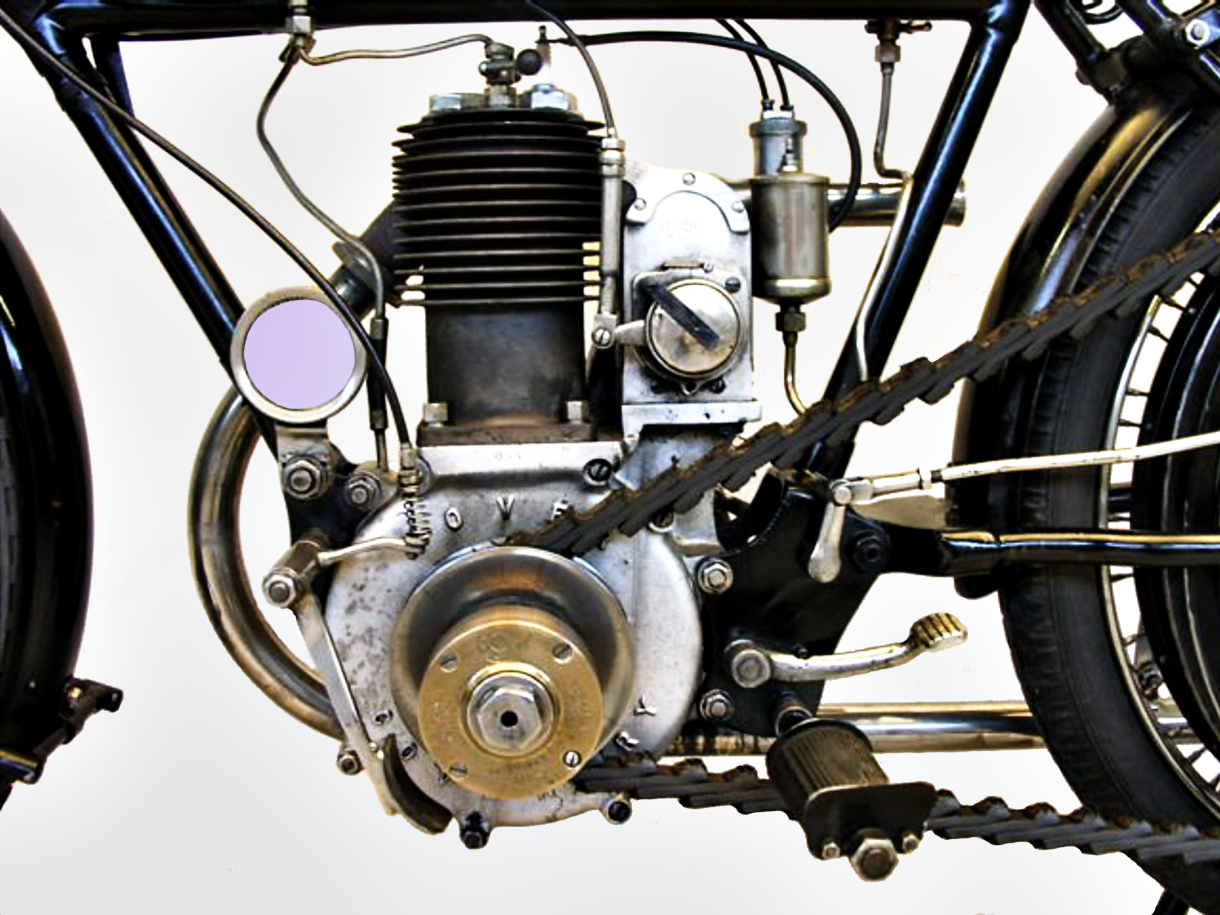
ROVER Motorcycles
From 1902 on: Imperial Rover Motorcycles
1902 - 1906, 1910 - 1926
View of the left hand side of the ROVER Single Cylinder Engine, model year 1913.
Around the turn of the century, The Rover Cycle Company Limited, as the name suggests, produced bicycles. The company was one of the most successful bicycle manufacturers in the country, design and material quality were considered first-class.
Cycling became popular in all sections of the population at the latest after the introduction of the "Safety" bicycle in 1885. This offered new possibilities in means of transport - excursions into the surroundings became fashionable.
On the other hand, a new invention made a name for itself: The combustion engine. Reason enough for Rover to take up the general interest and to take care of a motorized bicycle. Around 1900 some Peugeot motorcycles were imported and tested by the development engineers.
Small insertion: In addition to the ROVER Cycle Co., Ltd. an old acquaintance, William Starley, took care of motorcycles after the bankruptcy of Starley Brothers and Westwood Manufacturing Co. in 1900 with his company Starley & Co. Apart from one model, nothing is known about any further development.
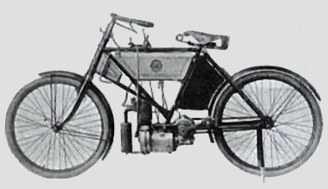 |
Small insertion: In addition to the ROVER Cycle Co Ltd. William Starley also took care of motorcycles with his company Starley & Co after the bankruptcy of Starley Brothers and Westwood Manufacturing Co. Apart from one model, no other development is known. |
According to many sources, one could get the impression that ROVER only started developing motorized vehicles after the death of John Kemp Starley in 1901. This is by no means true, not only because of the electric tricycle of 1888. John Kemp Starley had already received a patent for the motorization of the "Coventry Chair" with a de Dion Bouton engine in 1898. In the same year, he acquired a patent for "Improvements in automotive drive systems". This suggests that the considerations on motorcycles and automobiles were quite far advanced.
As early as 1900 or 1901 ROVER introduced a motorcycle based on the "Motosacoche" principle. Unfortunately, the corresponding documents are currently missing.
The information in "h.p." refers in each case to the tax classification; they do not represent any performance values. No "bhp" (= brake horse power) or "PS" (=horse power) information is given in any of the available source materials.
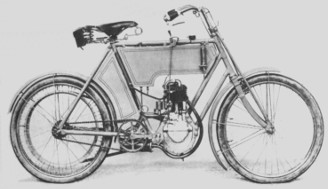 |
In 1902 the Rover Cycle Co Ltd. presented its first motorcycle. The so-called "Imperial Rover Motor Cycle" was powered by a 2.25 h.p. - lateron 2.5 h.p. or 2.75 h.p. - engine and cost £55. The market accepted the vehicle very favourably, until 1906 some hundred motorcycles of this type were sold. |
In these early years ROVER motorcycles gained great recognition for their quality and class. After all, both the frame and all other components were designed from the outset to withstand the high loads on the road at all times. The engine was also developed and built in-house; it corresponded to the state of development at that time; individual components far outperformed competitor products.
The Rover - "3 h.p." motorcycle follows the 2.75 h.p. version. It is supplied in two versions: with chain or belt drive. Both versions have ardent supporters who give free rein to their mutual aversions in the columns of letters to the editor of contemporary magazines. As today, the riders of principles are not to be irritated by any arguments.
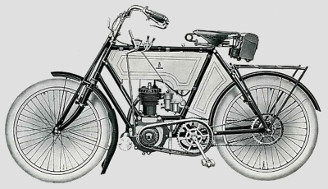 |
The Rover 3 h.p. motorcycle presented in 1904 is based on the previous 2.75 h.p. model. It is available with chain or belt drive. |
The Rover - "Motor - Tandem" uses the two 3 h.p. drive units. The chain-driven version is intended for those who would have liked to buy an automobile but are afraid of the follow-up costs. The expensive model came with water cooling, two-speed gear, and wheel steering. The luxurious vehicle met with great approval.
The simpler version was the belt-driven, air-cooled motor - tandem with slightly less power. It also found its satisfied customers.
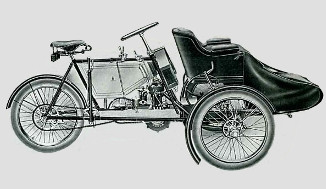 |
In 1904 Rover presented the "Forecar" tricycle in two versions: The expensive model with water cooling, two-speed gear, and wheel steering, the simpler version with belt drive and air cooling. |
In 1905 ROVER added an inexpensive light motorcycle, which was able to position itself quite successfully on the market. But it can't be overlooked that it was a final rebellion against the falling demand for motorcycles. The society had found its new toy in inexpensive automobiles.
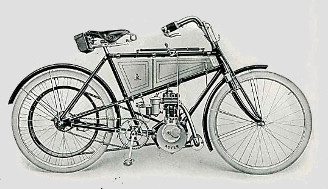 |
A new "Imperial Rover Light Motor Cycle" weighing 100 lbs and costing £40 was introduced for the 1905 season. It was considered handier than the ordinary motorcycle. |
Even the successful Imperial Rover Light Motor Cycle could not prevent the decision to stop motorcycle production at the beginning of the 1906 season after some 1,250 motorcycles had been produced. It was no longer possible to achieve adequate prices.
Competition from low-cost cars put pressure on the entire industry and motorcycle sales came under general pressure. Many manufacturers disappeared from the market. ROVER had the competition in its own house: The Rover 8 hp, but especially the cheaper Rover 6 hp required more attention in production and gained great popularity with the buyer.
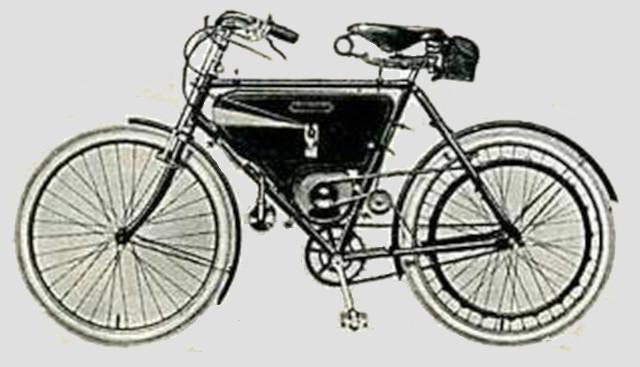 |
The special bicycle is from ROVER, the engine from Motosacoche - the whole thing is offered in the ROVER - bicycle brochure(!) from 1908. |
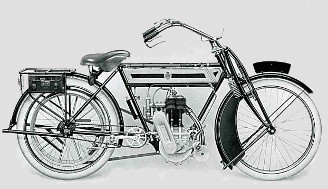 |
Inspired by the many requests from former satisfied customers and the resurgent demand for motorcycles, Rover introduced a new 3½ h.p. model. The single-cylinder engine met with lively interest. |
The new 3½ h.p. single-cylinder model was enthusiastically received. With the Druid front fork suspension and Triumph freewheel clutch, it hit the spirit of the times; the order volume exceeded all expectations. Increasingly, the motorcycle was also seen as a piece of sports equipment. The enormous order intake for ROVER bicycles and motorcycles encouraged the Executive Board to separate this part of the business from automobile production. In 1912 the New Rover Cycle Company Ltd. was founded.
Until the outbreak of the First World War, the 3½ h.p. machine remained the only model in production.
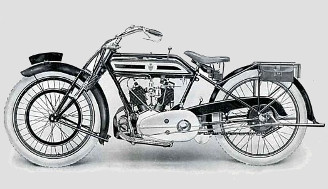 |
The 5/6 h.p. model developed in 1915 was initially only used by the armed forces of Great Britain, Russia and allied states. There were no civilian offers for this model until the end of the war. |
Until the end of World War I there were no sales brochures for the 5/6 h.p. two-cylinder engine for the public, nor was it advertised.
This motorcycle was also delivered to the Russian army, a team of instructors was sent to Archangel in the deepest winter. The 5/6 h.p. was also delivered to other allied armies. After the war the machines were also offered to the civilian public.
After the war, production of the 3½ h.p. model continued and the 5/6 h.p. two-cylinder engine was added. Both remained in the program until 1922, then the 3½ h.p. - machine was replaced.
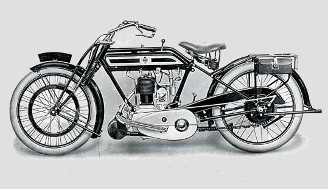 |
From 1922 the Rover 4 h.p. Motor Cycle replaced the proven but outdated 3½ h.p. model. The stronger three-speed machine was very well received on the market despite considerable competition. |
ROVER motorcycles, especially the TT versions, continued to be successful in all areas of motorcycling, including the Tourist Trophy race on the Isle of Man and the Scottish Six Days Trials.
In 1923, The New Rover Cycle Company Limited ceased to exist and control was reassumed by the parent company.
At the 1922 Motorcycle Fair ROVER presented a new, lively light motorcycle with 2.5 h.p. for the 1923 season. The design incorporated all the features of the most innovative motorcycle practice and offered the performance of the previous 3½ h.p.model - at a significantly lower cost.
Besides this new model, the 4 h.p. and 5/6 h.p. models were also offered.
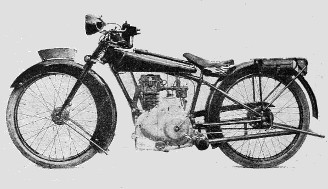 |
The former 3½ h.p. machine left a large gap in the range despite replacement. The newly developed 2.5 h.p. model was offered as a light motorcycle and was well received on the market. |
In the 1924 season only the 2.5 h.p. light motorcycle was offered, all other models were taken off the market without replacement.
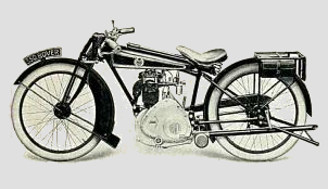 |
The 2.5 h.p. machine was quickly replaced by the 350 ccm model. As the only remaining model in the range, it could not generate lucrative quantities for Rover. After only one season, the 350 cc engine was also history. |
At the end of the 1925/1926 season Rover saw no future in the construction of motorcycles. The main interest of the company was then directed towards automobile production. It was therefore no surprise when the entire ROVER bicycle and motorcycle production was discontinued.
In the years 1902 - 1906 and 1910 - 1926 more than 15,000 ROVER motorcycles were produced.
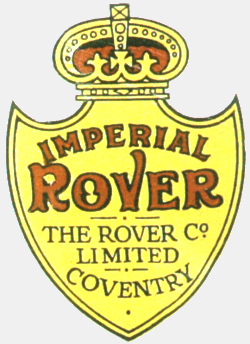
This emblem was used by the Imperial Rover Motorcycles on the left and right side of the tank.
| Overview on Production Years (without "Starley Eye-Opener") | ||||||||||||||||||||||
|---|---|---|---|---|---|---|---|---|---|---|---|---|---|---|---|---|---|---|---|---|---|---|
| Model | 1902 | 1903 | 1904 | 1905 | 1906 | 1910 | 1911 | 1912 | 1913 | 1914 | 1915 | 1916 | 1917 | 1918 | 1919 | 1920 | 1921 | 1922 | 1923 | 1924 | 1925 | 1926 |
| 2,75 hp | X | X | ||||||||||||||||||||
| 3 hp | X | X | X | |||||||||||||||||||
| Tandem | X | X | X | |||||||||||||||||||
| Light | X | X | ||||||||||||||||||||
| 3,5 hp | X | X | X | X | X | X | X | X | X | X | X | X | ||||||||||
| 5/6 hp | (X) | (X) | (X) | (X) | X | X | X | |||||||||||||||
| 4 hp | X | X | ||||||||||||||||||||
| 2,5 hp | X | X | X | |||||||||||||||||||
| 350 cc | X | X | ||||||||||||||||||||
| A l l i n f o r m a t i o n w i t h o u t g u a r a n t e e | ||||||||||||||||||||||
The proof that motorcyclists are friendly and helpful road users is provided by the following cartoon:
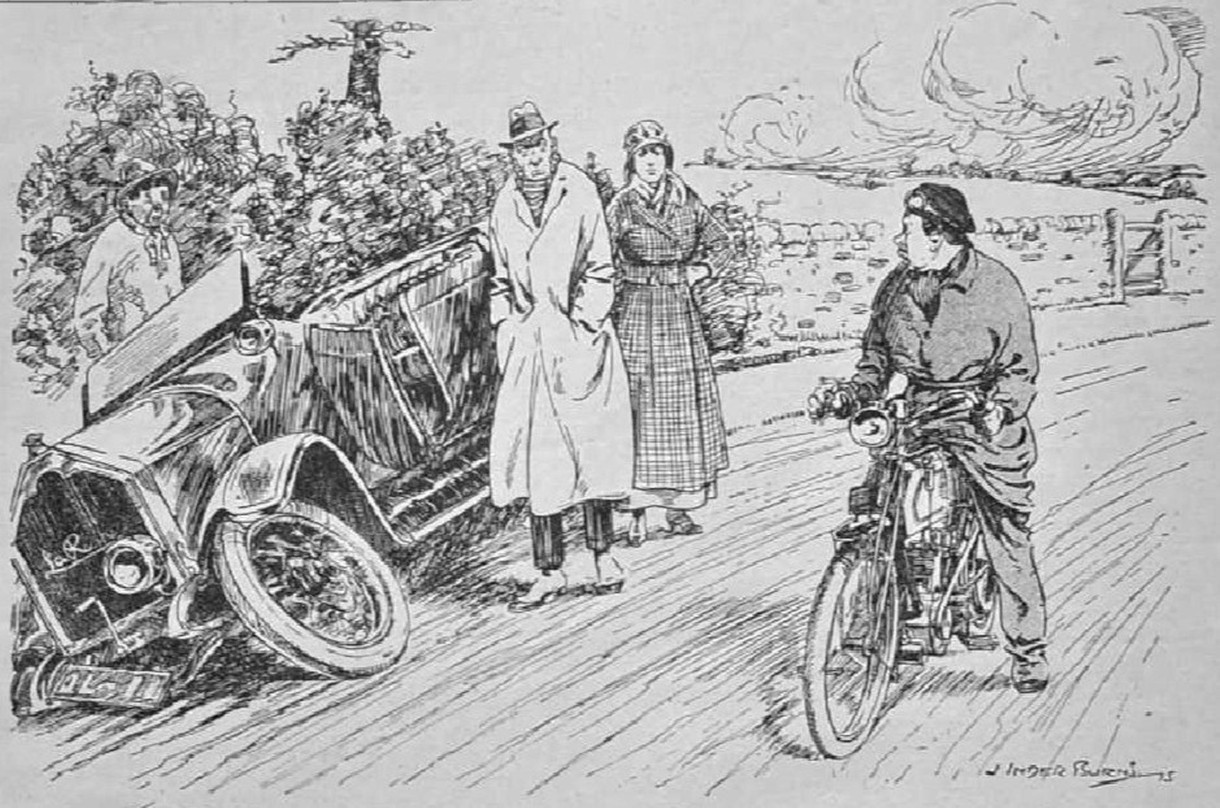
Sympathetic Novice: “I say, if you want a bit of copper wire, you know, I have some.”
Source: Motor Cycling, 12th Oktober, 1915
© 2021-2026 by ROVER - Passion / Michael-Peter Börsig
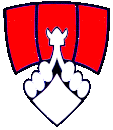
 Deutsch
Deutsch